Other People's Kitchens Q&A with Perzen Patel
Perzen shares her story of moving to New Zealand from India, adapting to a new country, it's cuisine and how she and her husband built a Spice business called 'Dolly Mumma', all from her kitchen.
Q. Hello Perzen. Can you please tell us a little about yourself, where you live and your substack publication?
A. Depending on the day you ask me, I’ll tell you I’m from New Zealand, India or Iran. The first two, I’ve lived in for equal parts of my life. And Iran, because I’m a Parsi Zoroastrian and while I’ve never stepped foot in Iran, my ancestors were from there. In New Zealand, we use a pepeha to share the roots that are most important to us and here’s mine:
Ko Damavand te maunga
Ko Arabian te moana
Ko Parsi te hāpu
Ko Patel tōku whānau
Ko Perzen tōku ingoa
Edited to include the Translation from Perzen mentioned in a comment below.
Ko Damavand te maunga - Mt Damavand is the mountain I call home
Ko Arabian te moana - The Arabian Sea is my water
Ko Parsi te hāpu - Parsis are my tribe, my community
Ko Patel tōku whānau - I'm part of the Patel family
Ko Perzen tōku ingoa - my name is Perzen
What I didn't get to go into in this piece is the significance of a pepeha in Māori culture. It's a form of introduction that's meant to share the places and people that are important to you.
Like other Indian immigrants, I’ve always had a complicated relationship with the food I grew up eating. Butter chicken, turmeric latte, naan bread. I have something to say about all of those and more.
With my substack, Beyond Butter Chicken I share stories about my journey falling out of love, then back in love with Indian food. By telling you the stories of my misadventures in food and life, I hope to inspire you in your journey beyond radioactive orange butter chicken and show you how simple and forgiving Indian food can be.
That in fact, Indian food can be made in any home, even yours.
Q. Can you please describe the layout of your kitchen, how much of a role does it play with your family, when writing for your substack publication 'Beyond Butter Chicken'?
A. Fun fact. When we were shopping around for a home, the first thing my husband would look for was a large bedroom. And me? A large kitchen of course. Ideally one with two pantries. I didn’t know when I’d get so lucky again as to find a kitchen with two pantries, two ovens and a gas stove. That’s when I knew we absolutely had to buy this house.
Our kitchen is where all the action happens. One pantry is devoted to the business and one for all my experimental cooking. When we’re not preparing curry pastes for our family business, I’m toodling around in there trying to use up whatever is left in the fridge. My kids know that if I don’t reply to them, I’m probably in the kitchen.
Aside from the pantries and ovens, my favourite part of the kitchen is that it’s open plan. I grew up in a house where the kitchen was in a far flung part of the house and if you were cooking in there for family or guests you couldn’t be part of the conversation. It was like you were being punished. I consequently love my kitchen where family and guests can gather around and chat (or make themselves useful and brew a pot of chai) while I washed the dishes.
Q. What are your most used kitchen gadgets that you cannot live without?
A. Kitchen gadget shopping is my favourite kind of shopping! When we bought this house I promised myself I wouldn’t clutter it with gadgets and kitchen utensils I hardly used.
It’s why we invested in a Thermomix which is my trusty workhorse. We use it for the business multiple days a day after which, it does a night shift for dinner.
I’m also in love with my half oven which heats up super quick, my gas stove for all things tadka, kettle, air-fryer and panini grill (the new one I got allows you to adjust the height so all your sandwiches don’t get totally squashed, magic!).
Q. You migrated from India to New Zealand, can you tell us something about that and what it was like moving to a new country. The change in culture and food.
A. I’ve migrated from India to New Zealand as a teenager.
From New Zealand back to India as a bride
And from India back to New Zealand as a mother.
Each time, it was like moving to an entirely new country.
I remember my second week in a new college where I stumbled into a classroom full of 15-year-old boys shouting “Penis. Penis. Penis.” and was embarrassed heating up my box of leftover masala potatoes. That was the start of my journey, rejecting the food I grew up eating in my bid to desperately assimilate in a new country.
As a result, when I moved back to India after five years in a long-distance relationship, I knew nothing about cooking Indian food. For date night one day, I decided to cook Chana Masala. First I added too many tomatoes. Then, it was too spicy. Over the course of our ten years of married life, I’ve recounted that date night many times and you’re going to have to read the full post ‘Chana Masala for Date Night’ to know why!
Over the years, food has been a source of grief, comfort, adventure and everything in between. It’s my anchor.
Q. Can you tell us a little about Dolly Mumma and how this came about?
A. As a kid, I used to go to my grandma, Dolly Mumma's house every weekend and she'd always make me her amazing curry for lunch. Once she cuddled and asked me what I wanted to inherit from her. I innocently told her that all I really wanted was a big, never-ending bowl of her curry that I could always have and remember her by.
When we moved to New Zealand (after living with my in-laws for seven years and having a cook who cooked our daily meals in India), it took some time adjusting to having to cook all the meals all the time. I’d spend every weekend making various curry pastes so that I had shortcuts in the fridge to make weeknight cooking easier.
With the same paste, I’d make a curry one night, a stir-fry the next and use up the balance as a party dip on a Friday.
One night over dinner I was complaining about the Kiwi obsession with radioactive orange butter chicken and how they all needed a taste of real Indian food. My husband Rushad, sales genius extraordinaire, convinced me I had to bottle up my pastes and see if there was a market for them.
In October 2020, we did our first farmers’ market and 100+ weekends later, we now have a thriving small food business that both Rushad and I run together. We ship curry pastes and spice blends across New Zealand via our website DollyMumma.com
Q. How would you describe the regional cuisine where you live in New Zealand? Are there fresh food markets or farmers’ markets available? Do you grow your own fresh produce?
A. The food in New Zealand tells the story of the people who live here. With people of all nationalities living here, we have a wonderful blend of restaurants from all sorts of cuisines. Historically, there haven’t been many restaurants focused on indigenous Māori cuisine, though that’s changing now.
My two favourite food things from New Zealand are our amazing pies - Pepper Steak with Cheese is the best - and our farmer’s markets. No matter where I travel in New Zealand, I must go to a farmers market because each one has its own identity and unique small producers that are regulars there. My favourite market in Auckland is the Clevedon Farmers’ Market, where I’ll eat a real fruit icecream each and every time. Though the biggest one I’ve been to was the one in beautiful Hawkes Bay, the fruit bowl of New Zealand, where I bought a kilo of perfectly ripe plums for $2!
Q. Is there anything about your kitchen that you would like to change or improve on?
A. I love my kitchen but it doesn’t make good use of available space. I’d love if my pantry shelves were actually pantry drawers. This way I could put things at the back of a shelf or at the bottom of a pantry and still be able to easily access it. I’d also love one of the knife magnets, spoons hanging down from the ceiling on hooks and a herb wall but I’m a #boymom so even as I close my eyes to imagine these in my kitchen all I see is a six year old hanging off the wall contraption or dangerous “sword” play I’d rather not have.
Q. What tips can you give us that will help keep our kitchens neat and tidy and easy to manage?

A. I have three spice related tips.
Firstly, if you cook with more than 3-4 spices, you need a Masala Dabba in your kitchen. An unassuming steel box containing seven steel bowls, a masala dabba is to the indian kitchen what an oven is to the western kitchen: a necessity. I wrote about this in my post Garam Masala - The Key to Flavourful Indian Cooking’
Next, if you’re grinding your own spice blends or using whole spices in your cooking, you must dry roast them first, ideally individually. Dry roasting spices allows them to bloom and release their full flavour. This seemingly unnecessary step is what makes your curries go from meh to mwah (chef’s kiss).
And finally, I used to roll my eyes behind my mother-in-law’s back for buying spice packets in 50gm sizes but I’ve learned that spices, especially spice blends, lose their aroma rapidly. Buying them in smaller quantities means you ended up using the spices when they taste best.
Q. How many cookbooks do you have and do you have any favourites? Have you written any cookbooks?
A. I’m an avid reader of just about every type of book. When we moved to New Zealand, I had to cull my book collection and give away most of it. The only books I’ve kept are a few (okay, about 20) collectables, mostly ones about regional Indian food. I rarely take my cookbooks into the kitchen to cook. For me, they are my bedtime or weekend reading when I want to learn something new.
A guest I interviewed for my podcast once described cookbooks as history books and it’s something I’ve taken to heart. Perhaps my favourite book in my small collection is Parsi Food and Customs by Bhicoo Maneckshaw. The book contains no pictures and only a handful of illustrations but I learned so much about my community’s heritage through that book. The section on vegetables kicks off with Bhicoo sharing, “one seldom heard of a Parsi vegetarian in my youth” while the section on eggs includes a recipe that once called for eight eggs and 500gm of ghee!
I haven’t written a cookbook yet, but I want to! In my head, it’s a culinary memoir that shares the story of me falling out of love and then, back in love, with Indian food. I’m tentatively calling it Butter Chicken Police. Read a few draft chapters and give me your feedback?
Q. Do you have a favourite recipe that you would like to share with us?
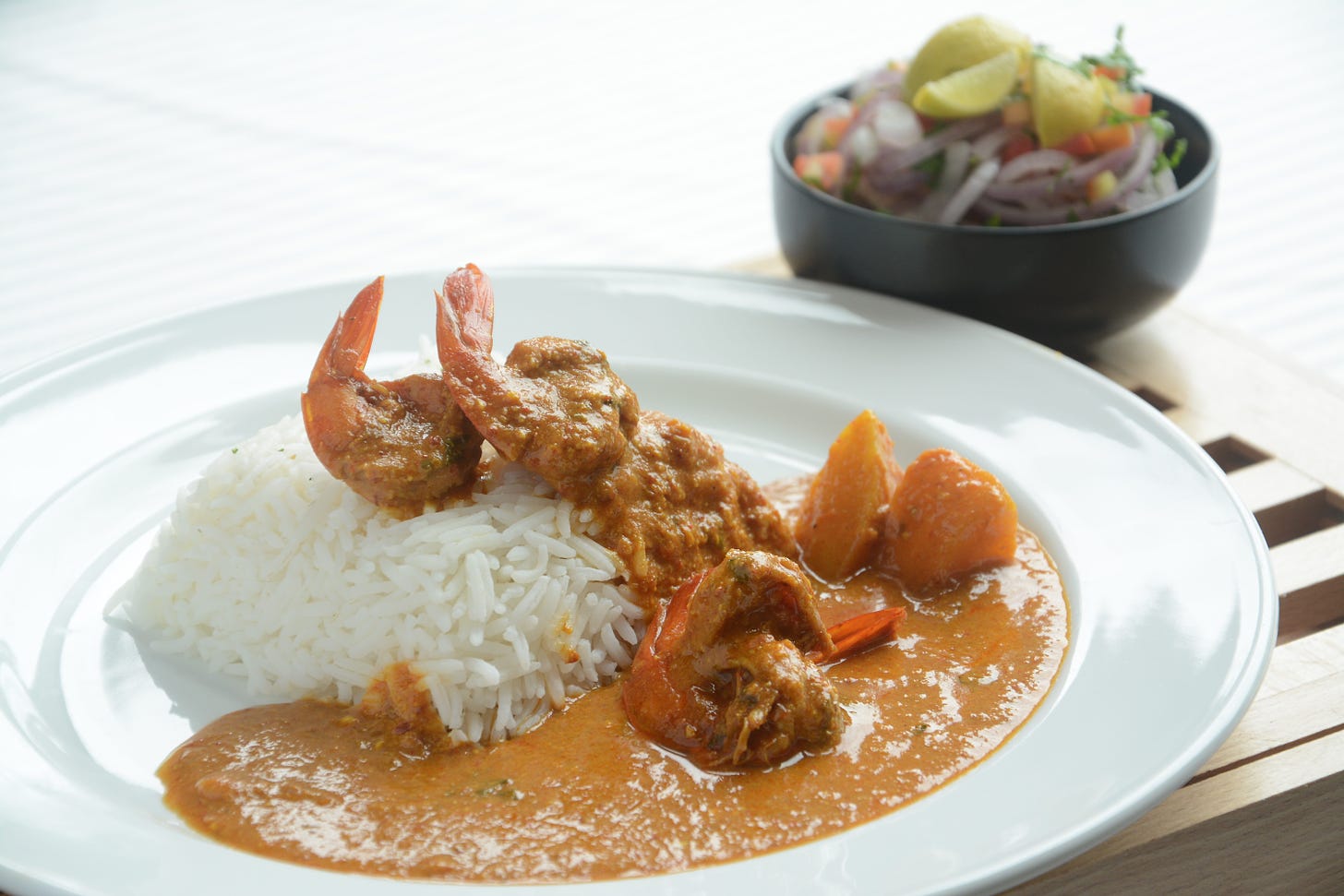
A. One of my favourite recipes I would like to share, is this recipe for Mumma's Prawn Curry.
This post, ‘A Never Ending Bowl of Curry' tells the story of how, as a child, I wished for a bowl of my grandmother Dolly's curry that would never run out and always remind her of home.
Q. Have you had any kitchen disasters that you can share with us?
A. Like any good millenial, I started my foray into the food world with a food blog. I stumbled into owning a business when the people reading my blog kept asking if they could buy food from me. I’ve not ever felt like a “natural cook” and so I have plenty of kitchen disasters to choose from!
I remember deciding to roast a 3kg lamb leg for the first time. I wanted to serve it hot from the oven and in my mind, I thought it would cook in 35-45 mins so I didn’t switch on the oven until 6pm when my guests were due to arrive. That night, no one had dinner until 10pm!
My other favourite story (which serves as a reminder of how far I’ve come in learning how to cook) is the night with my then-boyfriend-now-husband 12 years ago. New to India, I decided to cook him Chana Masala. In my mind, if I could impress Rushad - a die-hard non-vegetarian - with my vegetarian cooking skills it was a double love whammy. Except that in India, you can’t buy chickpeas pre-boiled in tins. So what I really ended up doing was serving my boyfriend a raw chickpea curry! Read more about that in this post: Chana Masala for Date Night.
Thank you so much for sharing you kitchen with us
Visit and subscribe to
and her publication Beyond Butter ChickenAll images are credited to either Perzen Patel or Stuff NZ.
Read more from the series Q&A: Other People’s Kitchens.
Thank you. Lynn H. (FSL)

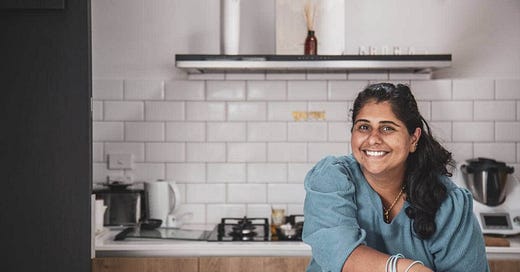




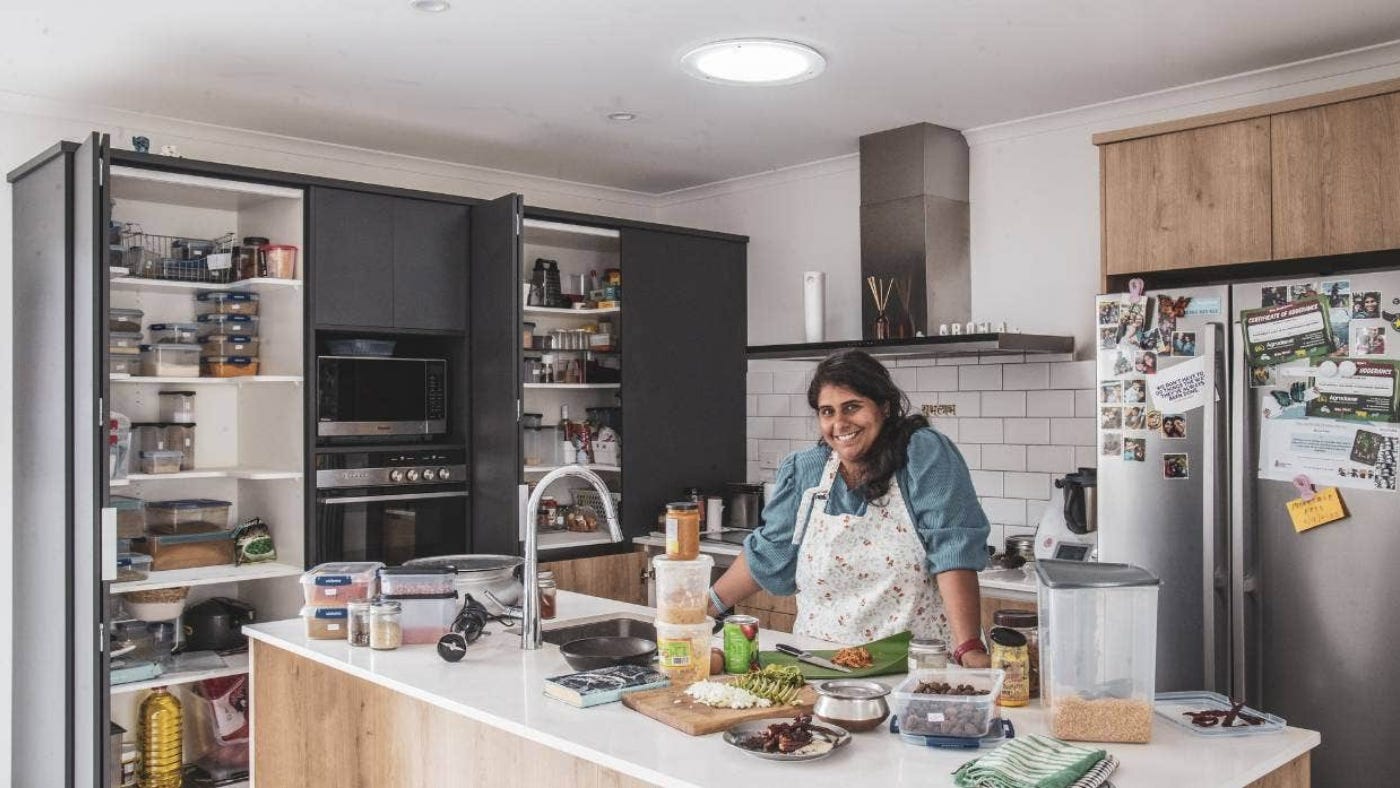
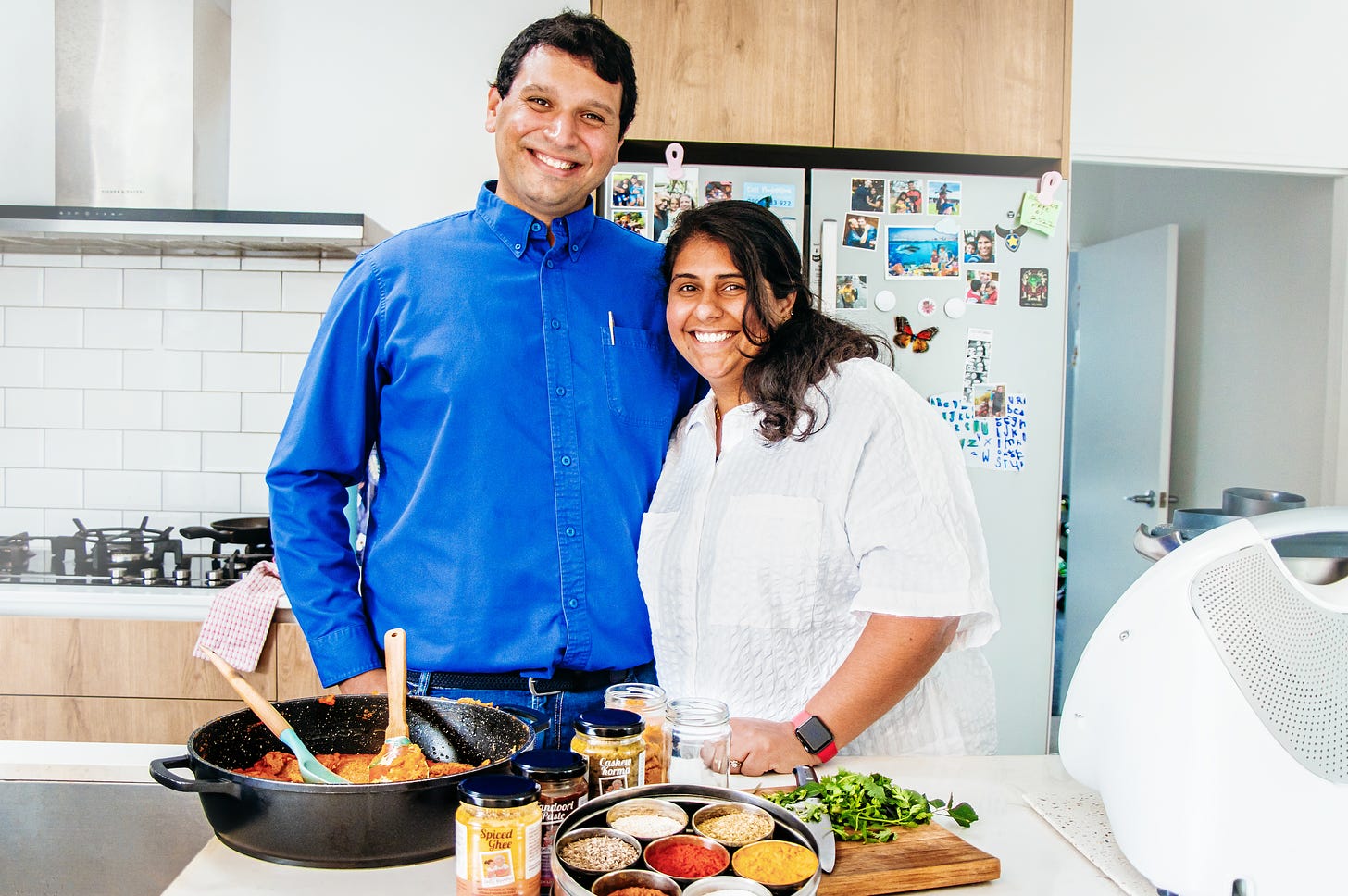

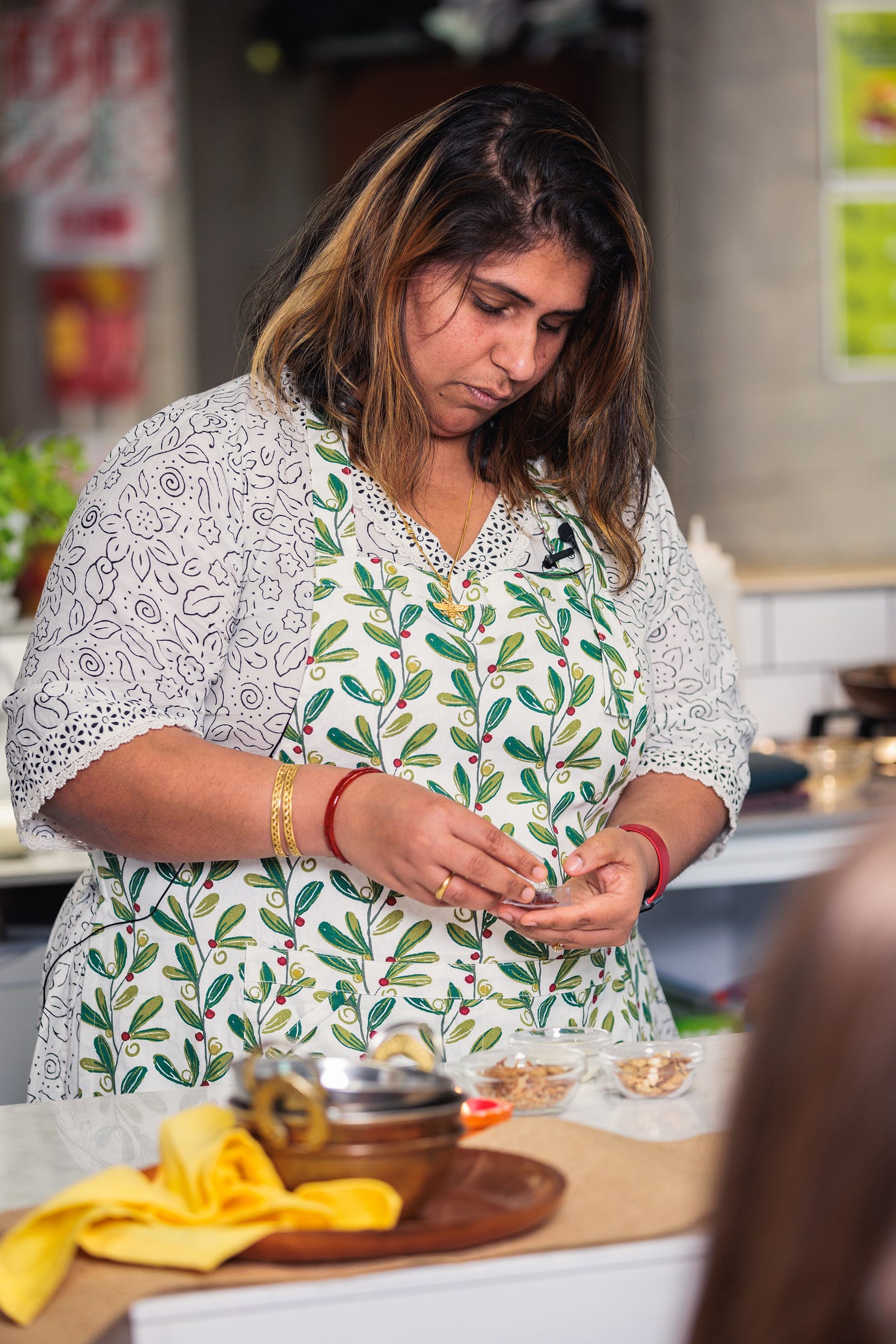
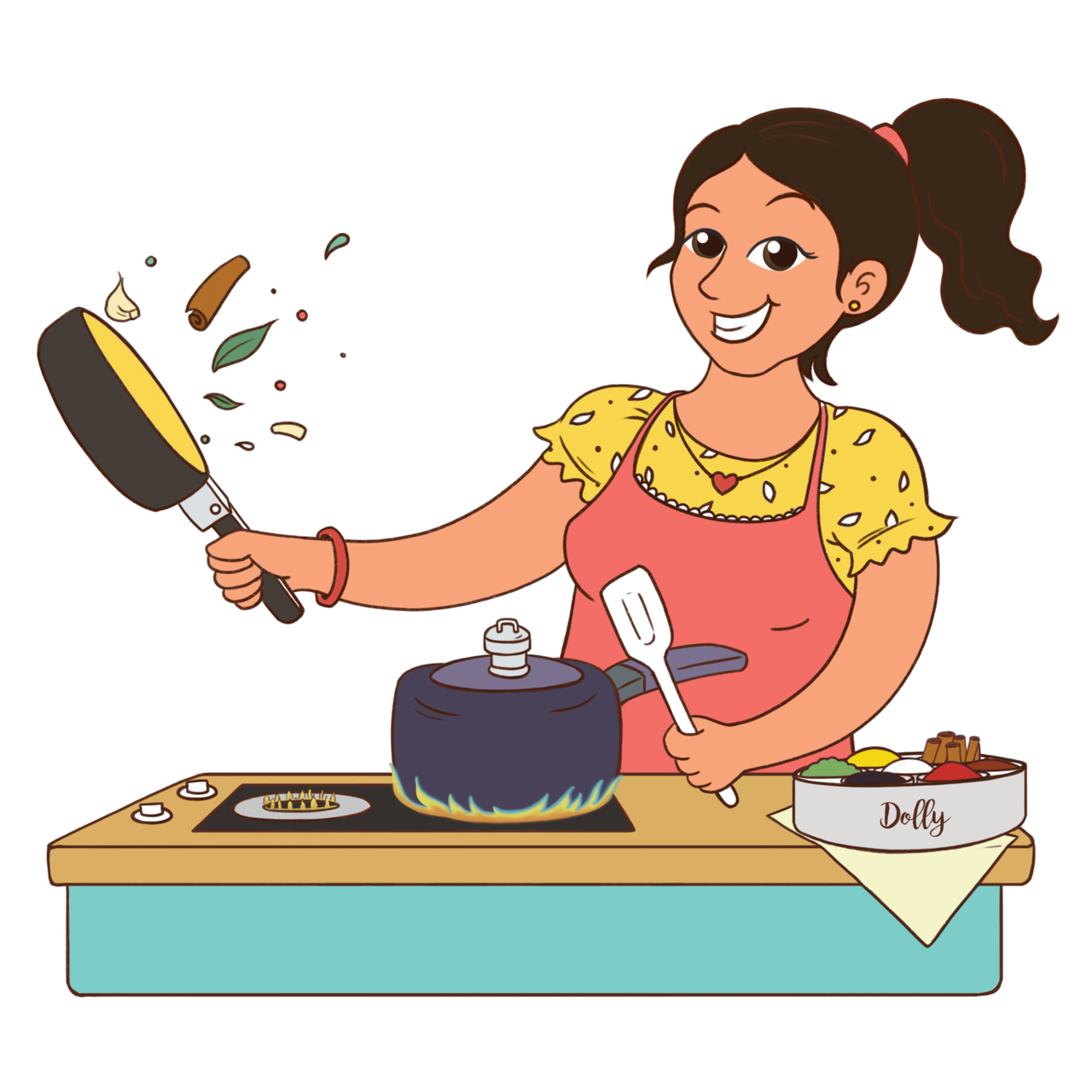

Interesting article. But included at the very beginning is a ‘pepeha’ in an undisclosed language. While I realize most people can recognise, read, and understand this language I can’t and assume at least a few others can’t either. If the ideas expressed in the quote are important, why not include a translation in a footnote or even a parenthetical.